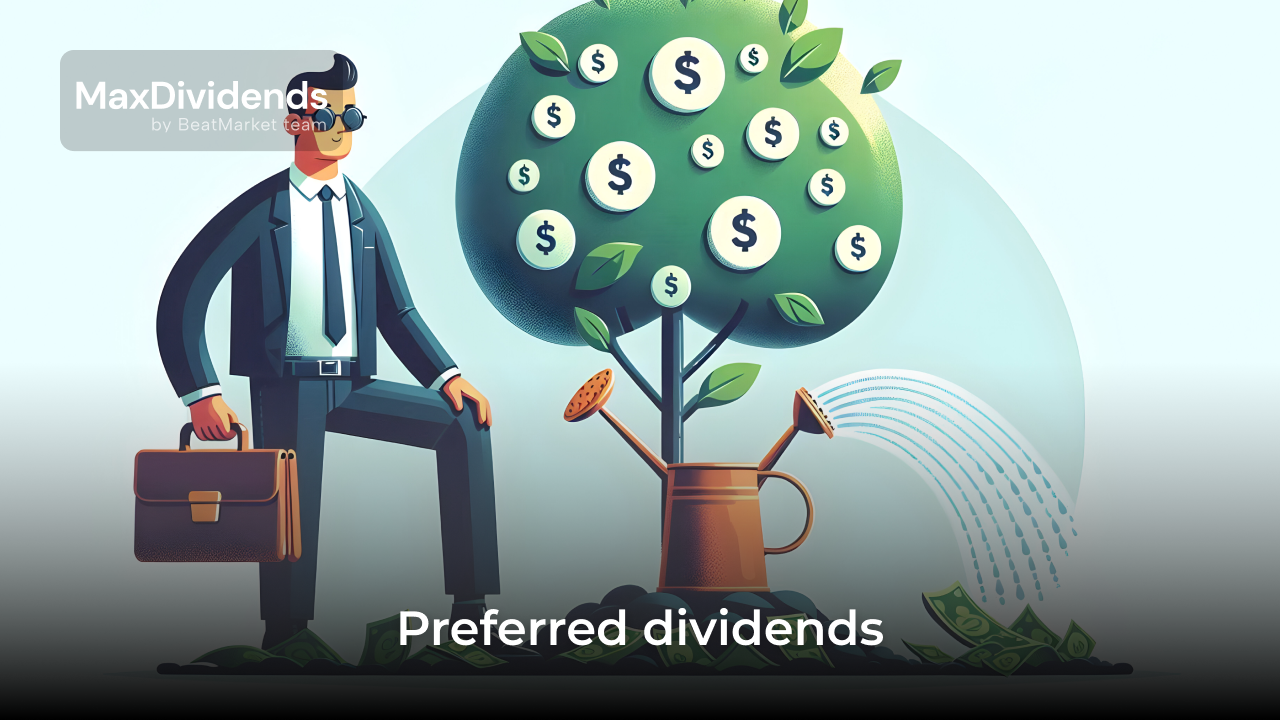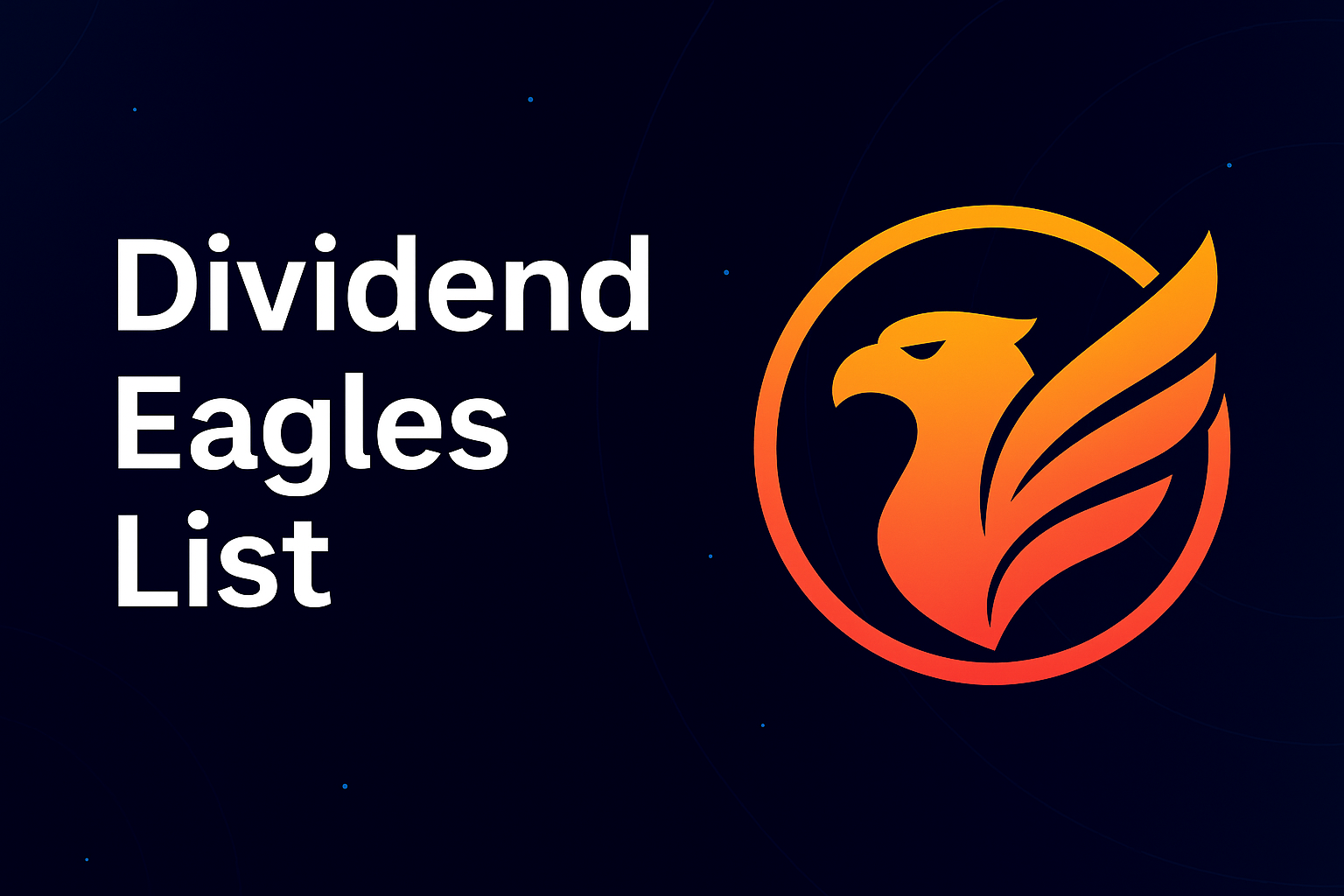- Preferred dividends are dividend payments made in cash to holders of preferred stock.
- These securities are purchased by income investors for fixed dividends. Understanding the preferred dividends formula is essential for calculating expected returns, as the amount of the payments is known in advance.
- Dividend priority is given to preferred shareholders. The company must fulfil its obligations to them before considering rewarding common stocks holders.
In this article, we will answer the following question: ‘What are preferred dividends, and do they truly provide a reliable income?’ We will also explore the various types and associated nuances.
Table of Contents
Understanding the Preferred Dividends Formula and Key Differences
The main difference is that preferred shareholders receive a predictable income. This income is not affected by fluctuations in the market value of the stock, although it is not necessarily a fixed rate dividend.
The frequency of profit distribution is also known in advance. It predominantly occurs on a quarterly basis. However, the prospectus for issuing securities may allow for a different schedule. For instance, dividend payments to shareholders are sometimes paid monthly.
Common stock dividends are only predictable for ‘dividend aristocrats’ and ‘dividend kings’. In general, ordinary stockholders have to wait for the dividend declaration from the board of directors to find out how much they will receive.
Another important difference is dividend security. If a company faces financial difficulties, holders of cumulative preferred stock receive all missed payments before common stockholders are rewarded again. Holders of non-cumulative preferred stock also have dividend priority over common stockholders, but only for current payments.
The main difference between dividends from common stock and those from preferred stock is that the latter do not entitle their owners to vote at shareholder meetings.
Types of Preferred Dividend Structures
Any preferred dividend can be classified according to two criteria. The first is the income it generates:
- Fixed rate dividends. The amount is determined when the securities are issued. They are determined by two factors: the benchmark interest rate and the par value. This type of asset enables income-focused investors to achieve more stability.
- Adjustable rate dividends. In this case, the dividend rate fluctuates based on a specific indicator, such as the London Interbank Offered Rate (LIBOR). This type of asset may be preferable during periods when the central banks of developed countries tighten monetary policy. However, it provides a less steady income.
- Participating dividends. Holders of participating preferred stock receive additional income on top of the fixed rate. The amount usually depends on the company’s profits or the size of payments to common stockholders. This asset is an attractive option for increasing portfolio yield.
The second classification distinguishes between cumulative and non-cumulative preferred stock. Cumulative dividends mean that any missed payments must be made up later. In contrast, non-cumulative dividends allow missed payments to be cancelled.
Preferred Dividends Formula: How to Calculate Payments
The income of preferred shareholders is not linked to the company’s net income. The preferred dividends formula is used to perform the dividend calculation:
Total annual preferred dividend = dividend rate x par value
The dividend rate and par value of the stock are specified in the preferred stock prospectus. Novice investors often make the mistake of using the market value instead of the par value in calculations. To calculate each installment payment, the annual dividend must be divided by the number of payment periods per year (in a similar way to how installment payments are calculated).
Let’s look at an example to show how to calculate preferred dividends using the preferred stock formula. Suppose a company issues preferred stock with a par value of $100 and a dividend rate of 3%. Over a year, therefore, the owner of one share would receive $3 ($0.03 x $100). In this case, the quarterly dividend will be $0.75 ($3 / 4).
Cumulative vs Non-Cumulative Preferred Dividends: Risk and Protection
Novice investors often ask: Does preferred stock pay dividends with a 100% guarantee? Cumulative preferred dividends offer the greatest dividend protection. If a company faces financial difficulties and does not pay dividends to shareholders, it incurs debt. This overdue amount is reflected on the balance sheet.
Any missed payments must be fully compensated to preferred shareholders before the company’s earnings are distributed to common shareholders. For example, if a company is supposed to pay $1 per share annually, it must do so. If it misses a year, it must pay $2 the following year.
Non-cumulative preferred dividends do not involve dividend accumulation. In this case, any dividends in arrears are cancelled. In the above example, preferred stockholders will receive dividends of $1 per share in the second year.
Priority in Payments and Bankruptcy Protection
Preferred shareholders enjoy a higher level of bankruptcy protection than common shareholders. However, they are not at the top of the financial hierarchy and may still incur losses in the event of liquidation.
During the liquidation of a bankrupt company, creditor claims and bondholders have payment priority for asset distribution. Before these payments are made, however, the company must settle any outstanding wage and tax debts.
Tax Treatment of Preferred Dividends
Let’s consider a common question: ‘What is preferred dividend from a tax perspective?’ Most of these can be classified as ‘qualified dividends’. Two conditions must be met for this:
- The security must be included on the list of preferred stocks with qualified dividends. This list comprises shares issued by US companies and foreign corporations that pay income tax.
- The investor must meet the holding period requirement. This means holding the stock for at least 91 days within a 181-day period. This period begins 90 days before the ex-dividend date.
Investors receive tax brackets on qualified dividends. In this case, dividend taxation at long-term capital gains tax rates (0% – 20%). For non-qualified dividends, ordinary income tax rates (10% – 37%) are applied.
This preferential tax treatment means that tax planning is an important part of maximizing your overall income. It is important to consider not only the stated yield, but also the potential tax advantages. Not all stocks offer these benefits: for instance, payments on trust preferreds are considered ordinary income and do not qualify for preferential treatment.
This favourable tax treatment also applies to dividends from ETFs and mutual funds that invest in preferred stocks.
Preferred Dividends in Corporate Capital Structure
Preferred equity combines the debt characteristics and equity characteristics. It is typically used to achieve a lower debt-to-equity ratio. Often, the board of directors will decide to raise capital through preferred securities in order to maintain control of the company. The company also has the right to buy back shares at par value within a specified timeframe.
However, preferred equity affects a company’s overall financial leverage and risk profile. Therefore, investors should take this into account when evaluating business prospects.
The presence of hybrid securities, especially cumulative preferred shares, in the capital structure means that the company has a higher claim on capital allocation between shareholders and investment in future business development. In order to fulfil these obligations, management must effectively manage corporate finance.
Knowing where to find preferred dividends on financial statements is important. This makes them easier for investors to track. Dividends on preferred stock are consistently reflected in the company’s balance sheet as a reduction in retained earnings. They can also be found in the income statement and the statement of changes in equity.
Market Trends and Current Preferred Dividend Yields
The dividend yield received by a shareholder is inversely related to the market price. The same is true for preferred shares. Market trends and Federal Reserve policy have a significant impact on the market value of such assets.
Regardless of economic conditions and interest rate environment, a yield comparison between the preferred stock index and the S&P 500 index favours the former. For instance, ETFs tracking the PVAR Index are expected to provide shareholders with passive income of over 5% in summer 2025. By contrast, ETFs on the S&P 500 offer around 1.5%.
Risks and Considerations for Preferred Dividend Investors
The decision to hold preferred stock is associated with investment risks that must be considered during the financial planning process:
- Interest rate risk. If the Federal Reserve rate rises sharply, holding such an asset becomes unprofitable and the market price of the stock falls. Conversely, if the Federal Reserve rate falls, the following risk may materialize.
- Call risk. In most cases, the company has the right to buy back shares after a certain period. This often occurs when interest rates decline. New investments replacing called shares become less advantageous.
- Credit risk. Financial difficulties can lead to a temporary dividend suspension or complete bankruptcy of the company.
- Inflation risk. Investors may find that their capital and the cash flow generated lose purchasing power.
- Liquidity risk. The trading volumes for these assets are significantly lower than for common shares.
Investors typically use classic diversification methods for risk management. They limit the proportion of their portfolio allocated to a single stock, and they also use asset distribution to align the risk-return ratio with their financial goals. The Sharpe ratio model can be used to determine this.
FAQ
What is the difference between preferred dividends and dividends?
Preferred stock dividends are considered a more reliable source of income. Understanding the preferred dividends formula helps investors calculate expected returns accurately. Companies usually only suspend payment in cases of significant financial difficulties, such as near bankruptcy. In contrast, ordinary dividends can usually be cancelled at any time, for example to invest in business development. Additionally, the amount of ordinary dividends is less stable.
How do you find preferred dividends?
The answer to the question of how to find preferred dividends is a simple formula. According to this formula, you need to multiply the dividend rate by the nominal value of the stock. You can find the relevant information for the calculations in the issuance prospectus.
What do you mean by preferred dividend?
This term refers to the regular payments received by holders of preferred shares.
What does 7% preferred stock mean?
It means that the owner of the stock will receive 7% of its nominal value each year.






